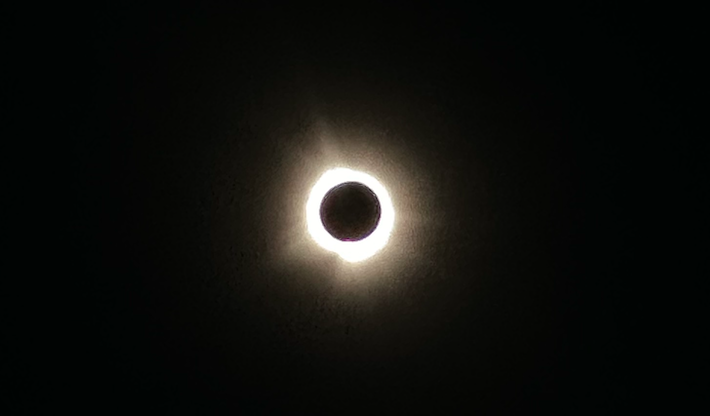A rare total solar eclipse captivated millions across North America on Monday, April 8. The celestial spectacle, which lasted just over two minutes in the path of totality, offered a breathtaking display of nature’s grandeur.
Solar eclipses occur when the moon passes between the Earth and the sun, casting its shadow onto our planet. There are three main types of solar eclipses: total, partial, and annular. Monday’s event was a total solar eclipse, the most dramatic of the three, occurring when the moon completely blocks the sun’s light.
Total solar eclipses are exceptionally rare, happening every one to three years somewhere around the globe, but often only visible from Earth’s poles or the middle of the ocean. They require a precise cosmic alignment, as the moon’s orbit is tilted about five degrees relative to Earth’s orbit around the sun. This means that the moon’s shadow usually misses Earth, passing above or below our planet. Only when the orbits align just right can a total eclipse occur.
Furthermore, total solar eclipses are only visible from a narrow path on Earth’s surface, known as the path of totality. This path, typically about 100 miles wide, is where the moon’s shadow completely blocks the sun’s light. Outside this path, skywatchers can still witness a partial eclipse, where the moon covers only a portion of the sun.

The path of totality for the 2024 total solar eclipse stretched from Texas to the East Coast, with cities including Dallas, Buffalo, N.Y., and Burlington, Vt., among the areas with the best views.
Among the thousands gathered at the Cotton Bowl stadium in Dallas was Antoine Goffin, a local astronomy enthusiast. “I feel incredibly lucky to have witnessed this total solar eclipse,” Goffin said. “The day was overcast but the seconds before the eclipse happened the clouds parted, the moment when the moon fully covered the sun, plunging the stadium into an eerie darkness, was simply awe-inspiring. It’s events like these that ignite a passion for science and remind us of the wonders that exist in our universe.”
For many, witnessing the eclipse was a family affair. One enthusiast, Lindsay Spencer, shared her story: “We went because [my brother] wanted to see it and many of us wanted to see it too. He’s been tracking it for years. He was so excited to be close to the path of totality.”
Last-minute changes to their plans due to weather concerns meant a scramble to find a new viewing location. “We did a last-minute scramble to change our plans. We drove two hours into Arkansas Monday morning, figured out the places he had scoped out were too crowded, and then drove another two hours and found this amazing place to watch the eclipse,” said Spencer.
Despite the hassle and expense of changing plans, the experience was well worth it. “When the eclipse happened, I was immensely glad I went. I have seen a few eclipses in my life, but being in the path of totality and being able to take off our glasses and see the sun completely eclipsed by the moon was something else entirely,” continued Spencer. “It was almost surreal. Watching the kids’ reactions to the sun disappearing; that was priceless.”

Lindsay Spencer
The sky darkens in the middle of the day as the moon passes directly in front of the sun in the path of totality.
The event has even inspired future eclipse-chasing plans. “I’m already making (mental) plans to prioritize both the one in 2044 and the one in 2045 (which happens to go right over the house I own in Oklahoma, so we’re lucky there). I may even plan around some of the other ones outside of the USA,” said Spencer.
The last total solar eclipse visible from North America was in 2017, and before that, in 1979. The next eclipse will be on August 12, 2026, visible from the Arctic, eastern Greenland, northern Spain, and Iceland. However, the next total solar eclipse visible from the contiguous United States won’t occur until August 2044.
In contrast to solar eclipses, lunar eclipses occur when the Earth passes between the sun and the moon, casting its shadow onto the lunar surface. Lunar eclipses only happen during a full moon and are visible from a much larger area of the Earth’s surface. They are also safe to view with the naked eye, unlike solar eclipses.
Monday’s total solar eclipse was a reminder of the precise celestial dance that governs our cosmos. For those fortunate enough to witness it, the event offered a humbling glimpse into the workings of our solar system and a renewed appreciation for the wonders of our universe.
Lindsay Spencer

